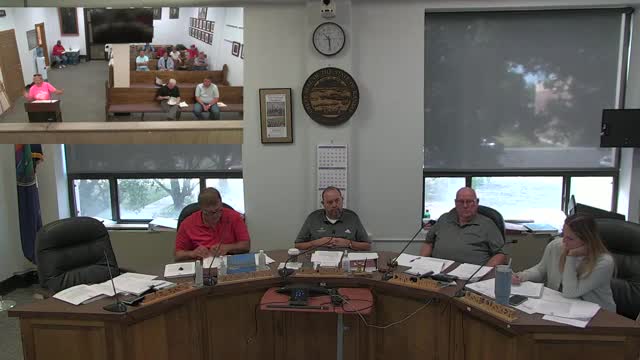Solar Farms Spark Controversy Over Tax Implications
August 30, 2024 | Crawford County, Kansas
This article was created by AI summarizing key points discussed. AI makes mistakes, so for full details and context, please refer to the video of the full meeting. Please report any errors so we can fix them. Report an error »

In a recent government meeting, discussions centered around the financial implications and regulatory frameworks for solar and wind energy projects in the region. Key concerns were raised regarding the tax implications of a proposed solar farm by Shasta Power, which is projected to be a $500 million project. Officials expressed skepticism about the projected tax revenues, particularly a claimed $4.5 million tax bill for the first year, questioning the accuracy of the estimates provided by Shasta Power representatives.
The conversation highlighted the complexities of tax exemptions associated with renewable energy projects. It was clarified that under state law, only the solar panels would receive a 10-year tax exemption, while other components such as land and battery storage would remain taxable. This distinction raised concerns about the overall financial impact on local tax revenues, with officials noting that the actual tax contributions could be significantly lower than projected.
Additionally, the meeting addressed the dual-use potential of land designated for solar farms, emphasizing the necessity for agricultural use alongside energy production. This approach aims to ensure that land remains productive and supports local farming initiatives, including innovative practices like grazing livestock under solar panels.
The meeting also touched on the ongoing moratorium on new energy projects, which is in place until a comprehensive plan addressing alternative energy can be developed. Officials acknowledged the need for guidance and clarity in navigating the regulatory landscape, particularly as the region prepares for an influx of solar energy projects.
As the discussions unfolded, it became evident that while there is enthusiasm for renewable energy development, significant questions remain regarding the financial viability and regulatory frameworks that will govern these initiatives. The outcome of these deliberations will likely shape the future of energy production and taxation in the area.
The conversation highlighted the complexities of tax exemptions associated with renewable energy projects. It was clarified that under state law, only the solar panels would receive a 10-year tax exemption, while other components such as land and battery storage would remain taxable. This distinction raised concerns about the overall financial impact on local tax revenues, with officials noting that the actual tax contributions could be significantly lower than projected.
Additionally, the meeting addressed the dual-use potential of land designated for solar farms, emphasizing the necessity for agricultural use alongside energy production. This approach aims to ensure that land remains productive and supports local farming initiatives, including innovative practices like grazing livestock under solar panels.
The meeting also touched on the ongoing moratorium on new energy projects, which is in place until a comprehensive plan addressing alternative energy can be developed. Officials acknowledged the need for guidance and clarity in navigating the regulatory landscape, particularly as the region prepares for an influx of solar energy projects.
As the discussions unfolded, it became evident that while there is enthusiasm for renewable energy development, significant questions remain regarding the financial viability and regulatory frameworks that will govern these initiatives. The outcome of these deliberations will likely shape the future of energy production and taxation in the area.
View full meeting
This article is based on a recent meeting—watch the full video and explore the complete transcript for deeper insights into the discussion.
View full meeting
